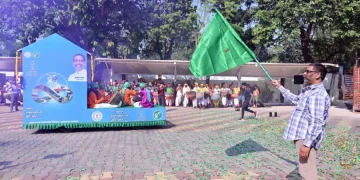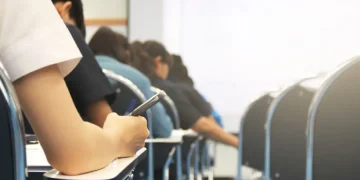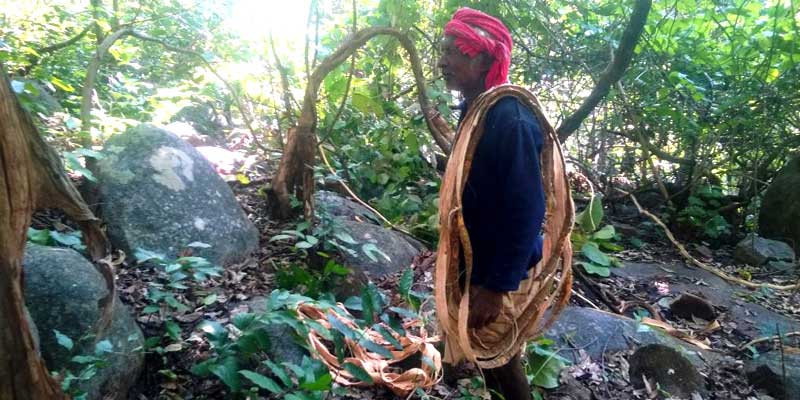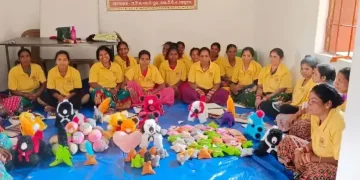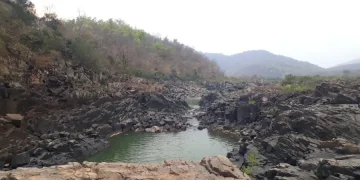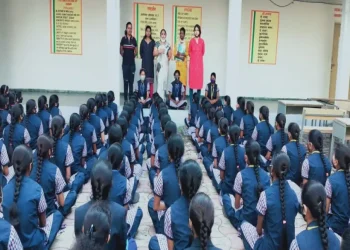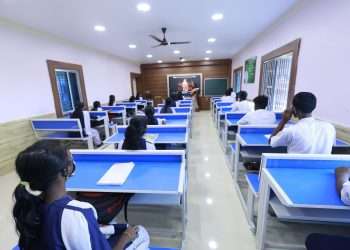Education forms the cornerstone of the state’s efforts to bring India’s Scheduled Tribes (STs) into the mainstream. Socially, it can probably bring about a transformation more than any other development measure, being both future-oriented and proactive, unlike other more protective initiatives.
According to the Census 2011, the difference between national literacy levels and ST literacy was 14 percentage points — almost 24% — with 59% literacy among
Scheduled Tribes. The more recent Periodic Labour Force Survey (PLFS) 2018-19 pegged this difference at 8.7 percentage points only, or 12.53%, as the literacy rate of STs stood at 69.4%.
The government is running a slew of programmes, including the Eklavya Model Residential School Scheme, ashram schools and funding under Special Central Assistance to the Tribal Sub-Scheme. According to the Ministry of Tribal Affairs, this will provide upper primary, secondary and senior secondary level education to ST students.
The government is running a slew of programmes, including the Eklavya Model Residential School Scheme, ashram schools and funding under Special Central
Assistance to the Tribal Sub-Scheme. According to the ministry, this will provide upper primary, secondary and senior secondary level education to ST students.
However, overall improvement notwithstanding, swathes of the tribal population still have very poor literacy levels. Across India, some 46 tribes show very poor literacy levels, that is, below 30%, and need improvement.
Here’s a look at five of the tribes with the lowest education levels in India.

Sulung and Sulung Bangni (Arunachal Pradesh)Literacy Rate: 17.9% and 17.1%
The Sulungs, who speak the Puroik language and are sometimes known by that name, are among the most economically and socially deprived tribes in the country. Historically, their backwardness has kept the Sulungs slaves to stronger tribes populating the hill tracts of Arunachal Pradesh, especially the Bangni. They are often sold to the tougher tribe in lieu of unpayable dues.
Sulung are estimated to populate 50-odd, scattered villages across the Subansiri and Upper Subansiri, Papumpare, Kurung Kumey and East Kameng districts. Now, with painstaking and patient efforts to free them of slavery — something that is opposed by the Sulungs themselves, apart from the Bangnis — they are going beyond being hunter/gatherers to embracing agriculture to an extent.
It is proving to be difficult to change the tribe from the bonded labour/slave mores that the Sulung have adhered to so far. Following a traditional religion, emotionally cowed by and unable to release their economic dependence on the Bangnis, the Sulung tribe remains figuratively far from development and education initiatives. And their low population density keeps them geographically distanced from mainstream society.
Much is still left to be achieved for the Sulung tribe in a state where 68.8% of the population comprises tribals.
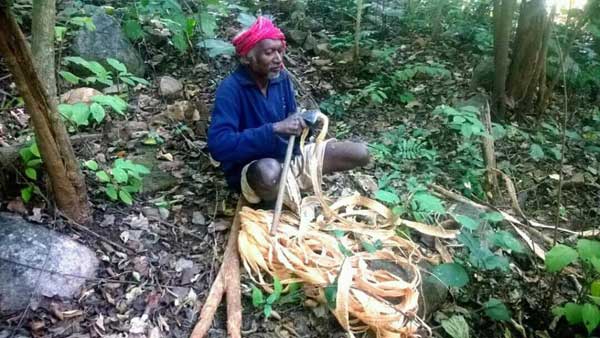
Mankidia (Odisha)Literacy Rate: 16.2%
The ‘monkey catchers’ of Sambalpur, Mayurbhanj, Sundergarh and Kalahandi districts are a semi-nomadic tribe. They are one of the 13 particularly vulnerable
tribal groups in Odisha, 22.8% of whose population is tribal.
Mankidia still worship nature, spend their life amid the jungles and remain far removed from social and developmental schemes. They are mostly economically
dependent on odd jobs trapping simians and handicraft using the fibre of the siali (Bauhinia vahlii) creeper. Of late, the tribals have been badly affected by the
pandemic’s fallout, with the tourism industry that markets their wares taking a debilitating hit.
Seeking to live close to the siali trees that are their livelihood, the Mankidia were denied habitat in Simlipal Tiger Reserve a couple of years ago by a Forest
Department concerned about attacks by wild animals. The tribe remains mostly unaware of their forest rights and is in dire need of practical as well as a more formalised education.

Cholanaikkan (Kerala)Literacy Rate: 15.3%
The Cholanaikkan are a very small tribal group (some 176-strong) based in the forests of Nilambur. Another particularly vulnerable tribal group, their interaction with mainstream society is minimal and strictly regulated by the government.
These hunter-gatherers live in the interiors of the forests, are known as the Cavemen of Kerala due to their dwellings, and do not have any concept of money or
agriculture.
Kerala tribals comprise merely 1.5% of its population, and the state government is taking steps to protect their unique culture. It has set up a small residential school for them but the Cholanaikkan response has not been very encouraging, despite general enthusiasm on part of the tribals. A research report pegs passouts at about 20 students. Most children last only a single semester and the literacy rate may well be much lesser than the official figure.
Of late, however, 24-year-old Vinod Mancheery has been in the news as the first Cholanaikkan tribal to reach higher education and start pursuing his PhD. Vinod
remains a triumph for a tribe that is small in size, geographically and culturally distanced, and mostly lacking adaptation to standard education.

Shom Pens (Andaman & Nicobar Islands)Literacy Rate: 3.1%
Another very small tribe is that of the Shom Pens of Andaman & Nicobar Islands, which has 7.5% tribal population. They are the indigenous people from the interiors of Great Nicobar Island. Education is not high on the government’s priority list for this very isolated tribe since a more pressing need is healthcare. The Shom Pen remain largely removed from the outside world and the safety of their culture and the tribals themselves, amid the influx of tourism, needs to be maintained before literacy is approached.







